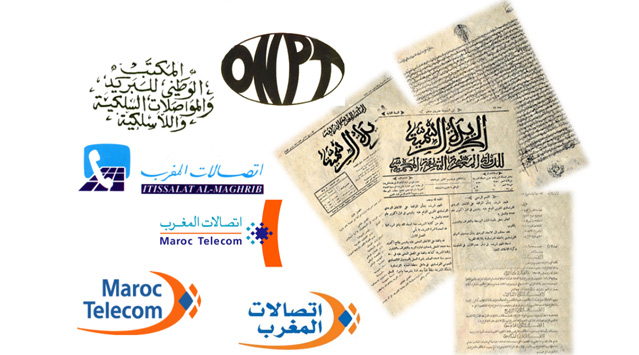A HISTORY OF PTT INSTITUTIONS

The Makhzen Post Office: 1892
This postal service was established by Dahir (royal decree) on November 22, 1892. Its main goal was to assert national sovereignty through controlling the delivery of correspondence between all of the country’s cities. In most places, post office staff were
Oumanas. They were assisted by distributors who covered the major cities of Morocco.
The first Posts, Telegraphs and Telephones Office: 1913
On 1 October 1913, Sultan Moulay Yusuf signed an agreement with French authorities aimed at creating a Posts, Telegraphs and Telephones Office.
The PTT Office carried out great work in the Posts, Telegraphs and Telephones field until independence in 1956. From then on, the PTT Office gave way to a Ministry.
The Ministry of Posts, Telegraphs & Telephones: 1956
In 1956, during the reign of King Mohamed V, the advent of independence for the Kingdom brought about the creation of the first Ministry of Posts, Telephones and Telegraphs, promulgated by Dahir No.1-56-269 of 26 October 1956.
The National Office of Posts & Telecommunications: 1984
The telecommunications sector was growing fast and significant investments in the area were needed in order to equip the country with a modern infrastructure and prepare the sector to face competition. In response to these developments and the particular needs of Telecommunications, the Government, under the leadership of His Majesty King Hassan II, created, by royal decree, the ONPT (the National Posts and Telecommunications Office) in 1984.
Itissalat Al-Maghrib : Maroc Telecom: 1998
The expansion of new Posts and Telecommunications services led to the questioning of the almost universal method of managing and organizing these two activities. The worldwide trend aimed, among other things, to separate the activities of the post office from those of the telecommunications field. The telecommunications industry had to adapt to the socio-economic changes resulting from the country's overall development. At the same time, it had to fit into a set of international networks characterized by ever closer ties with the private sector. It also needed to contemplate operating the network within a commercial and competitive framework. It therefore became essential to provide the sector with a new legal and regulatory structure capable of encouraging private initiatives. In response, the law creating the
Itissalat Al-Maghrib Company, also known as Maroc Telecom, was adopted on February 10, 1998.

